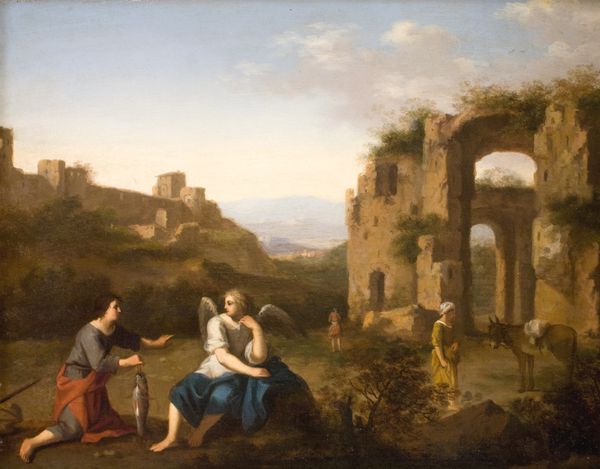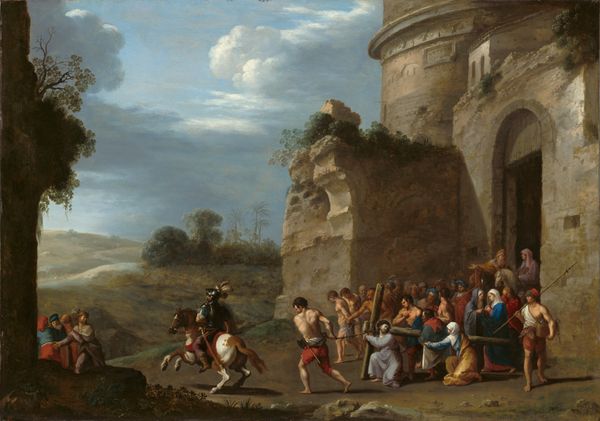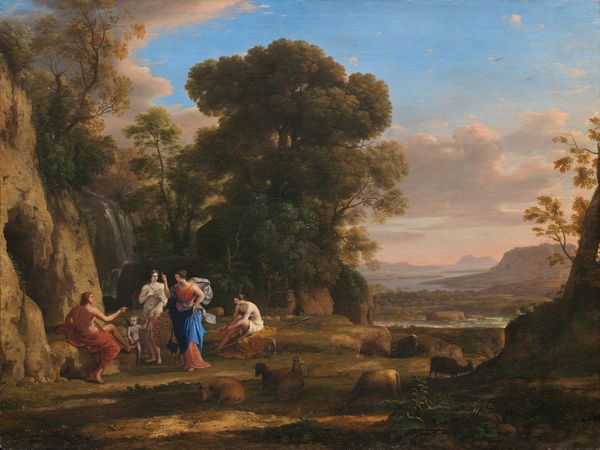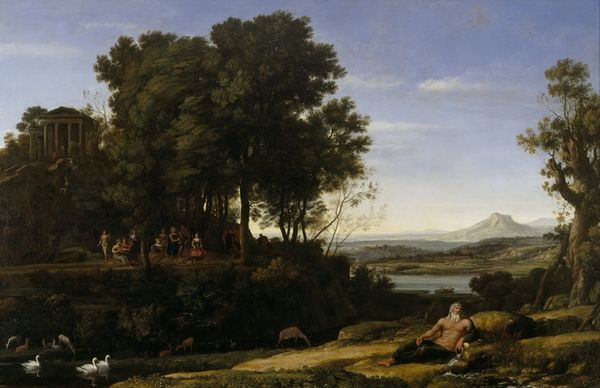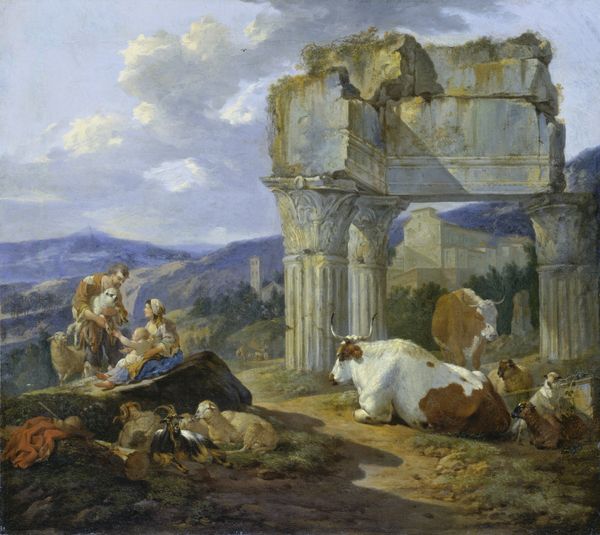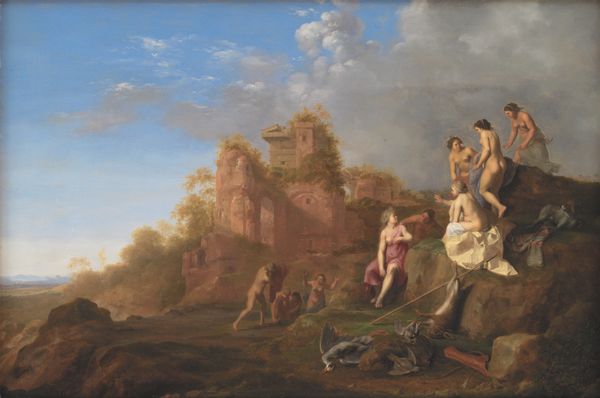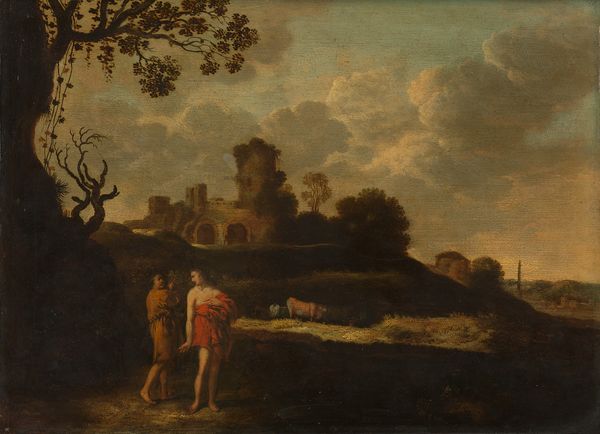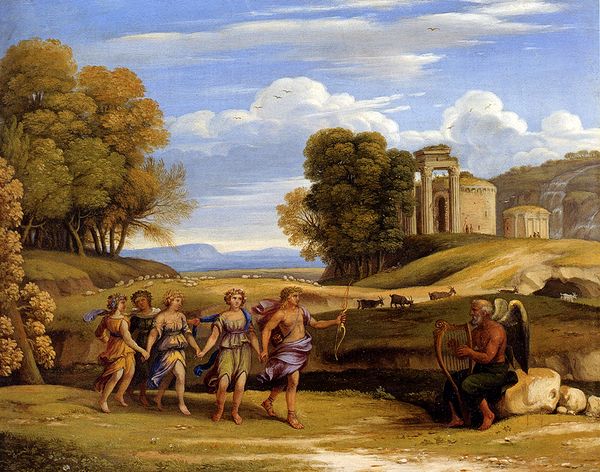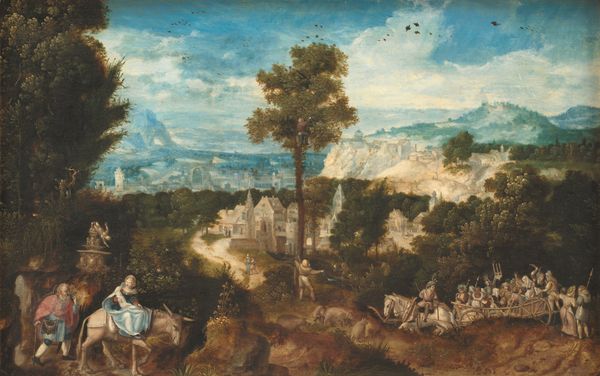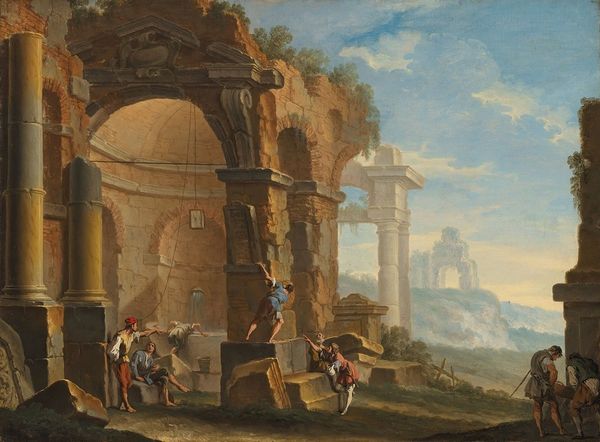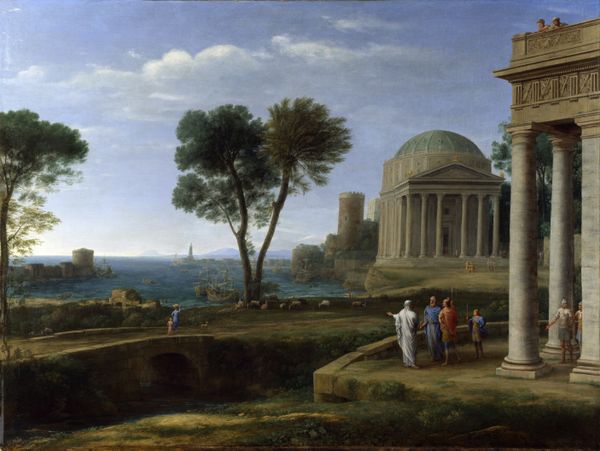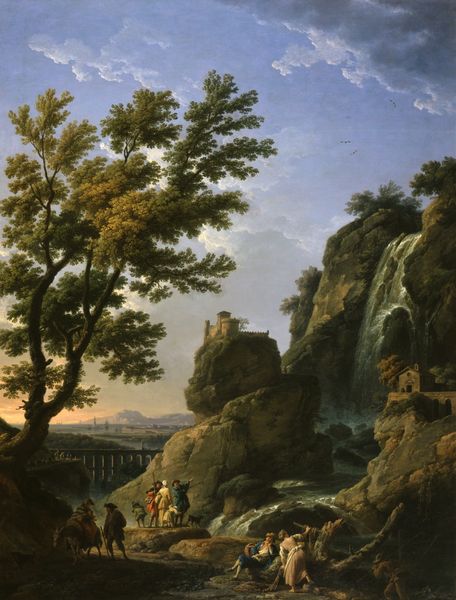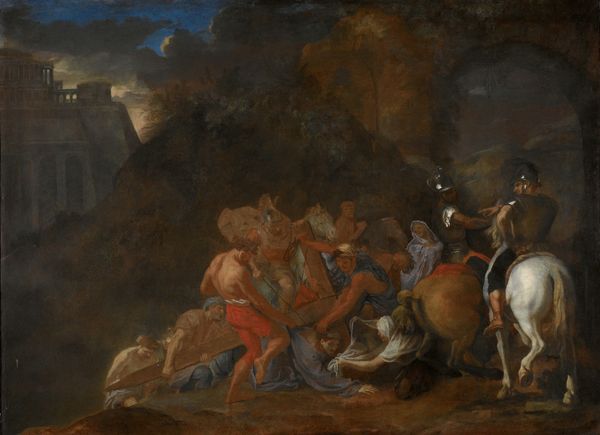
The Prophet Elijah and the Widow of Zarephath c. 1630
0:00
0:00
oil-paint
#
baroque
#
dutch-golden-age
#
oil-paint
#
landscape
#
figuration
#
oil painting
#
history-painting
Dimensions: overall: 35.6 x 47 cm (14 x 18 1/2 in.) framed: 51.1 x 62.1 x 5.1 cm (20 1/8 x 24 7/16 x 2 in.)
Copyright: National Gallery of Art: CC0 1.0
Curator: At first glance, this canvas imparts a sense of serenity, doesn’t it? A kind of classical composure. Editor: Indeed. What we’re viewing is Cornelis van Poelenburch's oil on panel, "The Prophet Elijah and the Widow of Zarephath," created around 1630, during the Dutch Golden Age. I’m interested in how the medium itself affects this tranquility. The oil paint applied to the smooth panel…how does that impact the image we're taking in right now? Curator: Well, to me, the ruin on the left dominates. The weathered stone, seemingly untouched by time, speaks of history. It reminds me of the impermanence of human construction in contrast to nature's resilience. Editor: Precisely. It is essential to think about those classical ruins within a religious story. It gives weight to the historical setting and the context in which people find salvation, or perhaps just survival. I also think Poelenburch used quite fine brushes; you see little impasto at play here, which means greater illusion. How might that influence readings of divinity? Curator: That attention to detail almost flattens it though, doesn't it? The material reality, like the labor of brushstrokes or varied pigments seems hidden, and that smooth finish seems idealizing, fitting, perhaps, for the era's perspective on landscape and narrative. Consider the attire and social standing—notice anything interesting? Editor: Elijah's red robe signals a kind of moral authority and hints at sacrifice, while the widow’s kneeling position, along with her blue dress, feels like submission to something greater. I suppose it could just reflect 17th-century social dynamics. Yet, I also find that specific hue of blue has often been reserved to symbolize truth, revealing divine or revealed knowledge. Curator: Interesting. And the very practical detail of the boy gathering sticks speaks to basic survival. He’s crucial here: his work underpins their livelihood. This highlights how art, even religious scenes, depended upon everyday, material existence for their creation and context. Editor: I find it intriguing how the setting-- these broken structures, with this warm lighting--becomes synonymous with the rebuilding, the sustenance this widow receives by Elijah, how broken stone is brought together with symbolic clothing... the overall picture seems to coalesce into one central message. Curator: Exactly. I find the conversation it encourages about survival, craftsmanship, and devotion is truly timeless. Editor: Yes, it's a scene where the ethereal and earthy are beautifully entwined. It leaves one pondering the meaning imbued in these pigments and the figures brought to life with them.
Comments
No comments
Be the first to comment and join the conversation on the ultimate creative platform.
